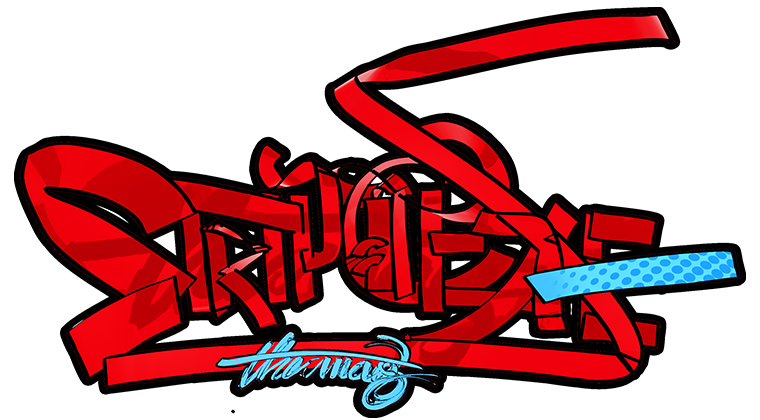Ravana, a Hero?
When they rejected the idea of developing the character of Duryodhana, the villainous Kaurava from Mahabharata, as the protagonist of a graphic narrative, Vivek Goel and Vijayendra Mohanty realized that greatness is never defined by darkness alone but intricate nuances, both honorable and immoral, that contribute to the complex process of storytelling – in this case, the adaptation of an epic.
Much unlike the moustachioed ten-headed demon that previous depictions of the Ramayana familiarized us with, Holy Cow Entertainment’s Ravana is clean shaven with glorious locks of white hair – that symbol of nobility – adorning his only head. Goel’s artwork coupled with Mohanty’s words makes this particular Ravana perhaps the most gorgeous instance of the character that I’ve encountered in the pages of a graphic novel, the specific format notwithstanding.
Vijayendra Mohanty, writer, explains, “The purpose of all good speculative fiction is to make the reader think by questioning prevailing ideas about reality. Science fiction does it by questioning our ideas of physical reality and our ideas about the future. With Ravanayan, we questioned not the reality of the events of the Ramayana, but the reality of the Ramayana as a story – how it exists in our minds and what it stands for. That sort of a mental exercise is always something one can use.” It’s safe to say that creative freedom aside, the task of creating a narrative revolving around a man who is so quintessentially evil was quite a challenge.
Popular renditions of Prince Rama in exile introduce us to a clean-shaved man with an undeniably regal air. In Ravanayan, Rama is transformed as a disheveled young man with Rastafarian locks, tatters and unkempt stubble as he ambles around in forests, lost and hopeless. The unexpected touch of realism makes him one of the most believable Ramas in the graphic tradition. “It is important that characters should look different, and more importantly, Ravana is a monarch. I am sure he can afford a daily shave unlike Rama who is in exile,” Goel remarks earnestly when asked about his decision to make characters look so unlike their traditional depictions.
Over the years, Indian mythology has proved to be a bottomless source of inspiration for Indian comic creators. From publishing giants like Amar Chitra Katha to contemporary independent houses and creators, there seems to have been a decision across the board to tell stories of gods and demons from the point of view of the victorious and the inevitably good. Holy Cow’s Ravanayan chooses to break away from these norms and create perspectives that fuel questions about the things we love to believe. Ravanayan begins with a man who is aware, intelligent, and undeniably charismatic. Inspired by Valmiki’s original portrayal, Goel and Mohanty cast this epic villain as knowledgeable, a fearless leader, and yet, a man who succumbs to insolence and arrogance in the end like so many other ‘fallen-heroes’.
The intricacies of Indian mythology in its constant evolution and various revisions means that, unsurprisingly, most people have never known that there is so much more to Ravana than the ten headed demon who lusted after Rama’s wife, abducted her and then was rightfully defeated by the brave king Rama. In his origins, this demon is a sage too, whose extensive knowledge of ancient Indian scriptures like the Vedas and the Upanishads may seem surprising considering the lambasting he’s received over the centuries in orthodox Hinduism. And it’s the result of this tarring campaign that few of us know Ravana’s original name (Dashanan) as he was christened by no less a deity than Lord Shiva himself. Moreover, this no-holds-barred baddie was summoned to perform a yagna (religious ceremony to invoke gods) on behalf of Rama and Lakshmana before they stormed Lanka – being Shiva’s greatest devotee, he was the only man who could. “When you know of a man who is wise, brave and strong, you need to tell the world about him and set him free from the role of a defeated man who is sheer evil,” says Goel. In fact, till the sixth book of the series, we see a man who’s blessed with more than his fair share of divine and demonic abilities, and is, perhaps, born to rule the world.
In the final installment of the series that was released last year, Goel also made sure to address the greatest complaint readers had – the lack of epic battle sequences. With pages dedicated to bloody warfare, the last few volumes are perhaps best kept far away from children and the weak-hearted – or so Goel advises. But for those who have an insatiable love for gratuitous violence, Ravanayan’s Hanuman is built to please, boasting of superpowers that put both Superman and the Hulk to shame, and which are deployed generously in the battle sequence with Ravana.
Ravanayan is the story of the anti-hero, as told by the anti-hero. However, much as Holy Cow Entertainment breaks free from tradition to create this narrative of alterity, they choose to remain true to Valmiki’s original ending where the virtuous emerge triumphant. The conclusion feels unimportant, though – it’s the slow build-up to the very last page that makes the story unforgettable and Ravanayan a complex and many layered narrative force to be reckoned with.






One thought on “Ravana, a Hero?”
Comments are closed.